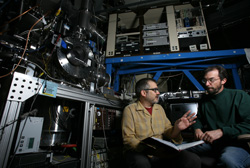January 13, 2012 • LIVERMORE, Calif. — In a breakthrough paper (full text/PDF) published in this week’s issue of Science magazine, researchers from Sandia’s Combustion Research Facility, the University of Manchester and Bristol University report direct measurements of reactions of a gas-…
